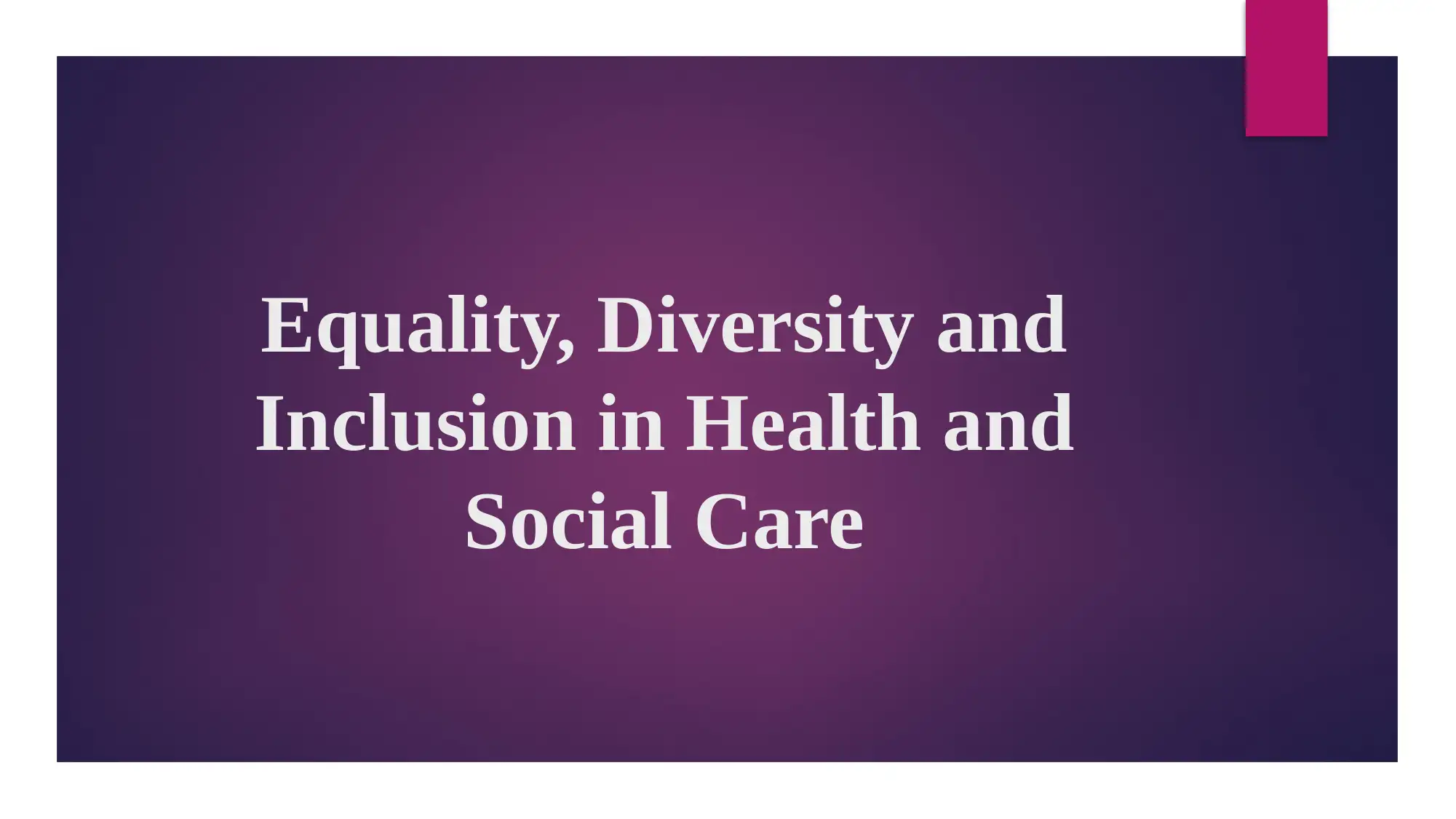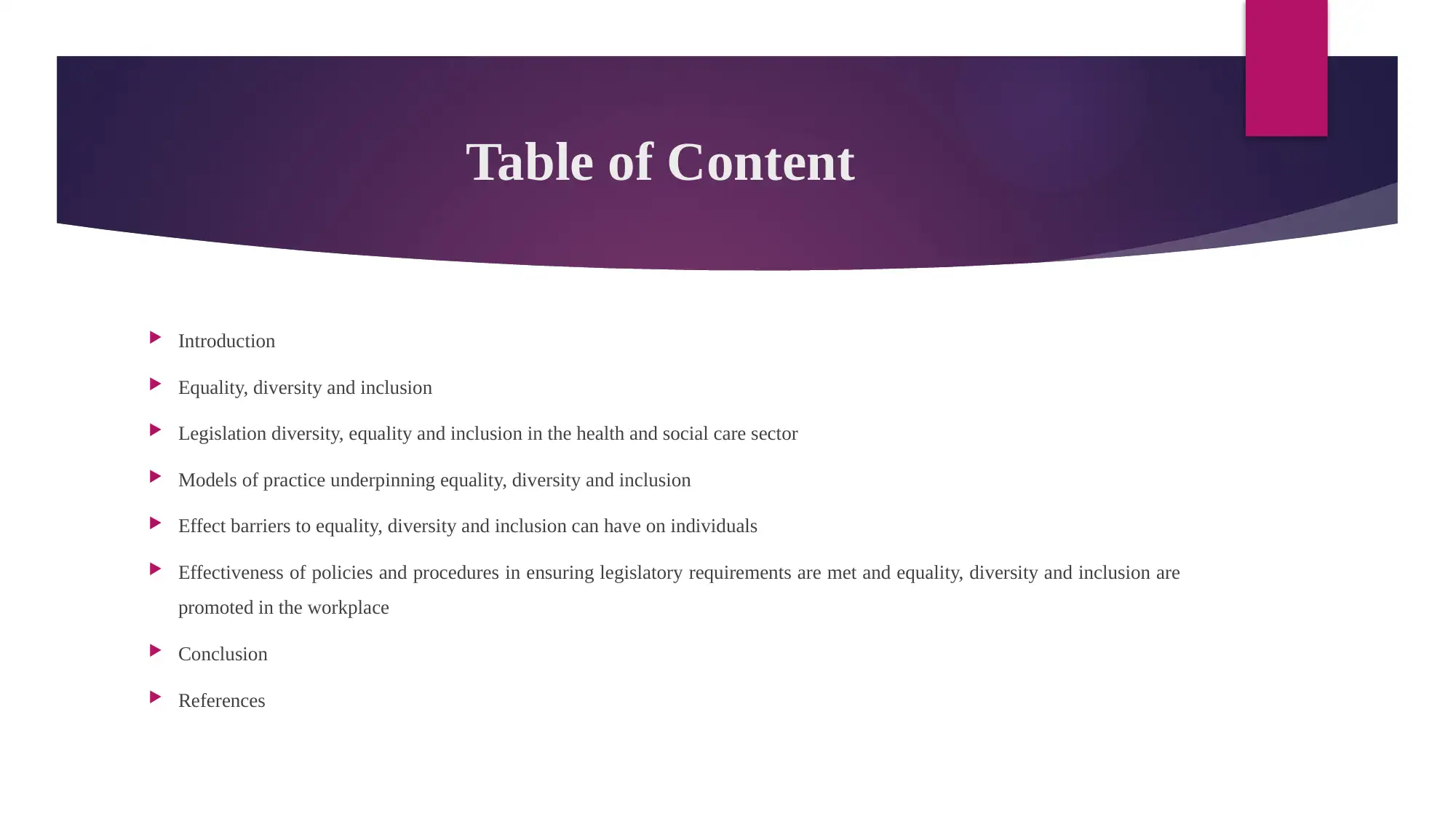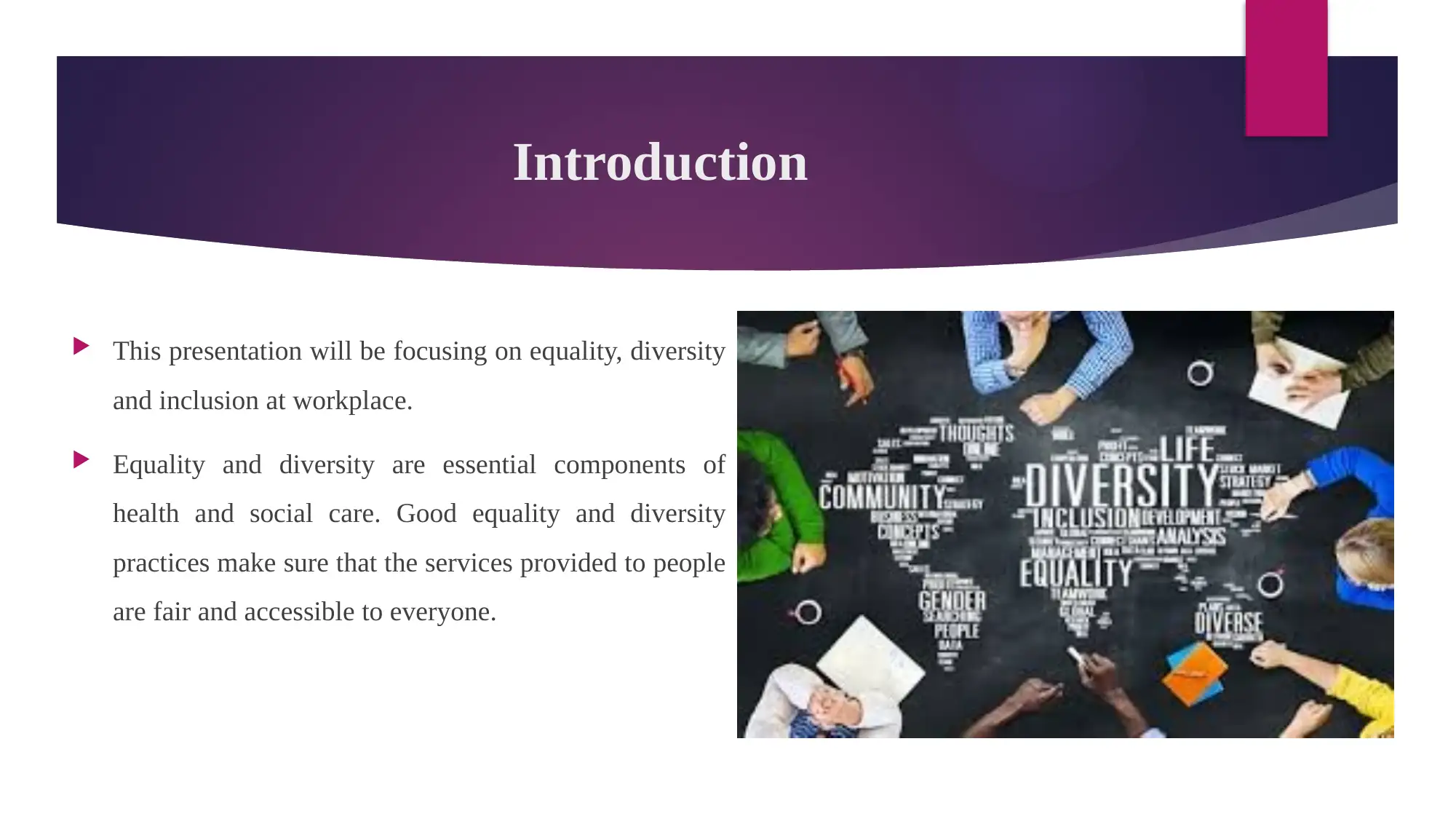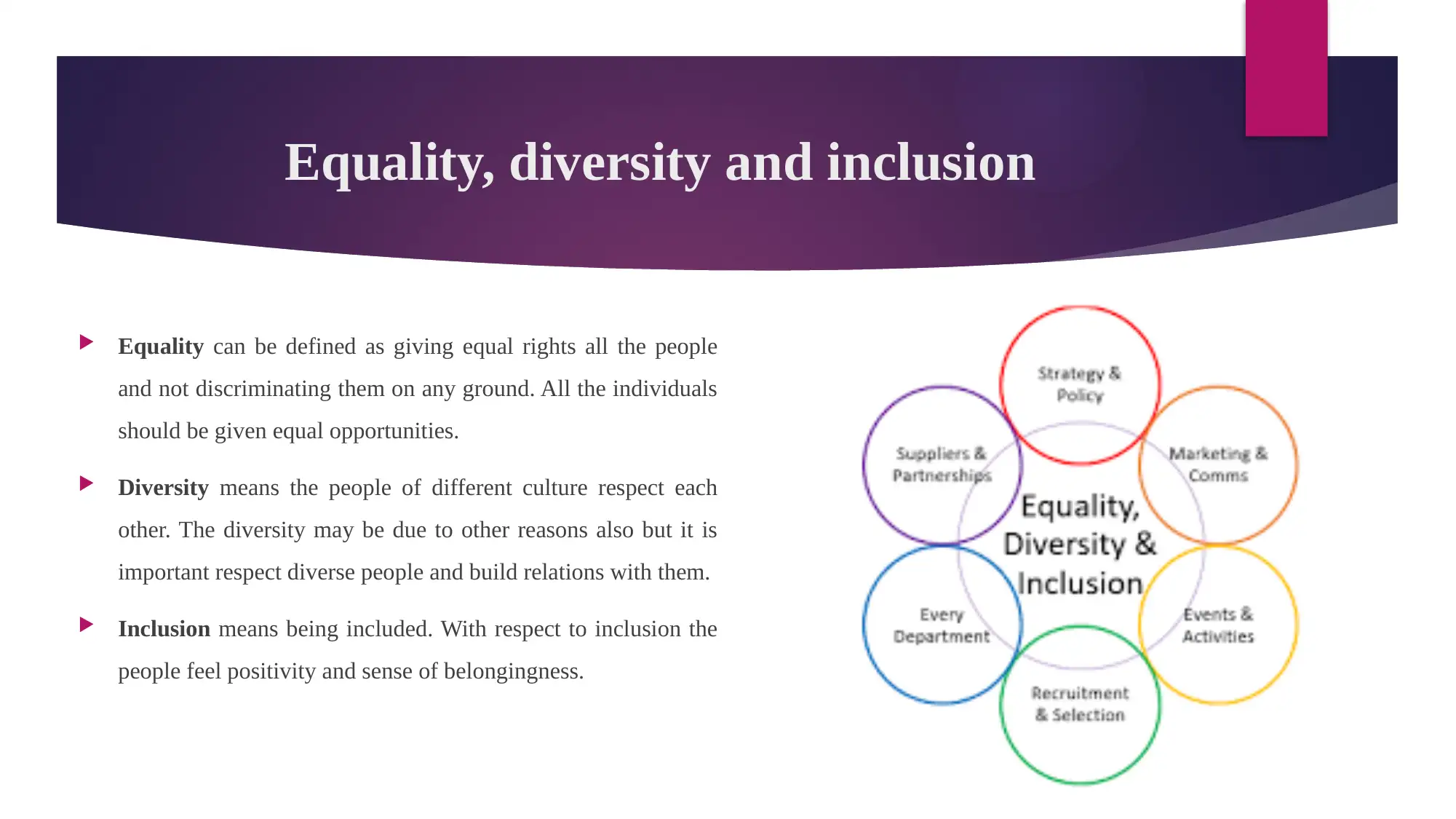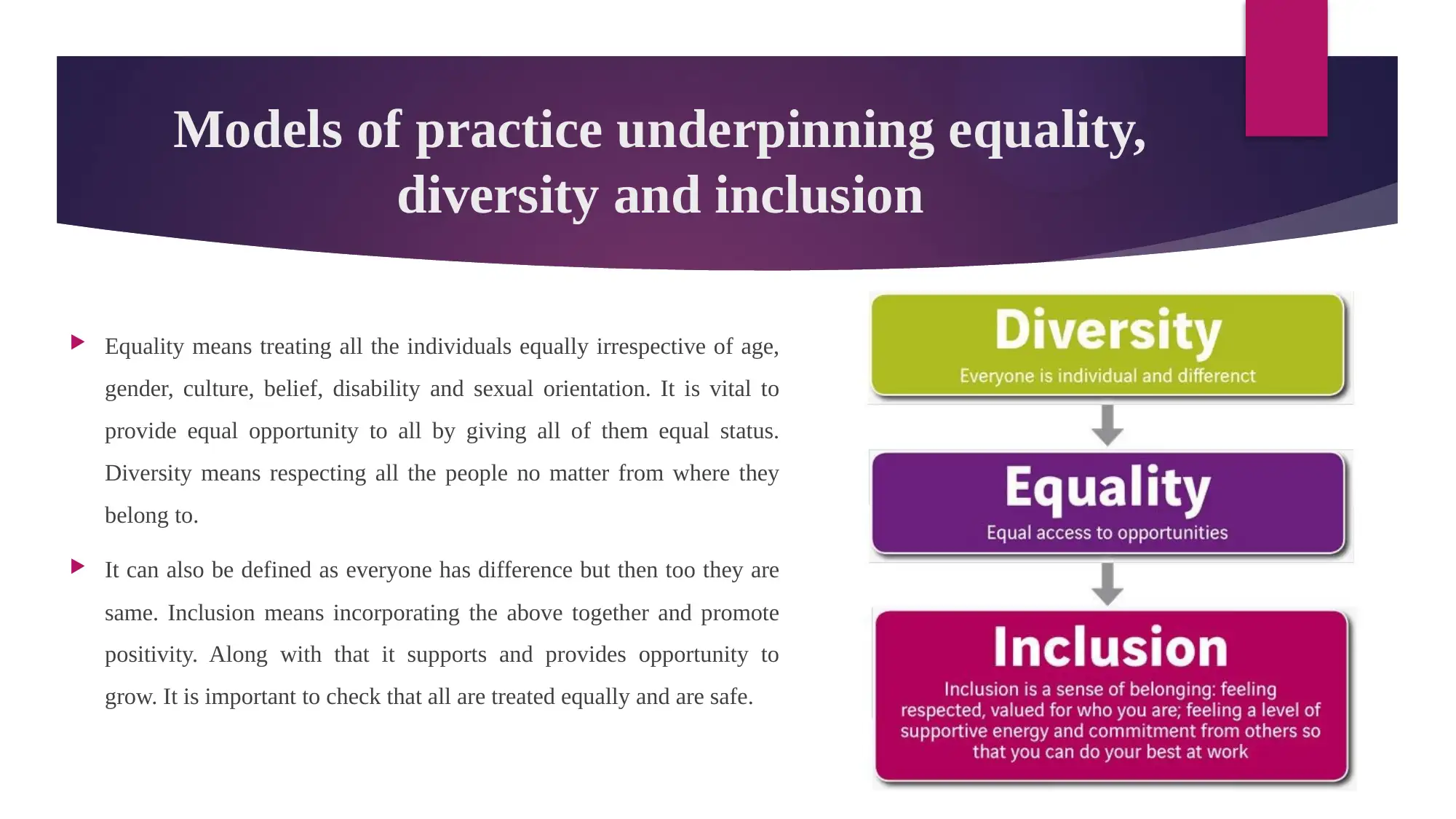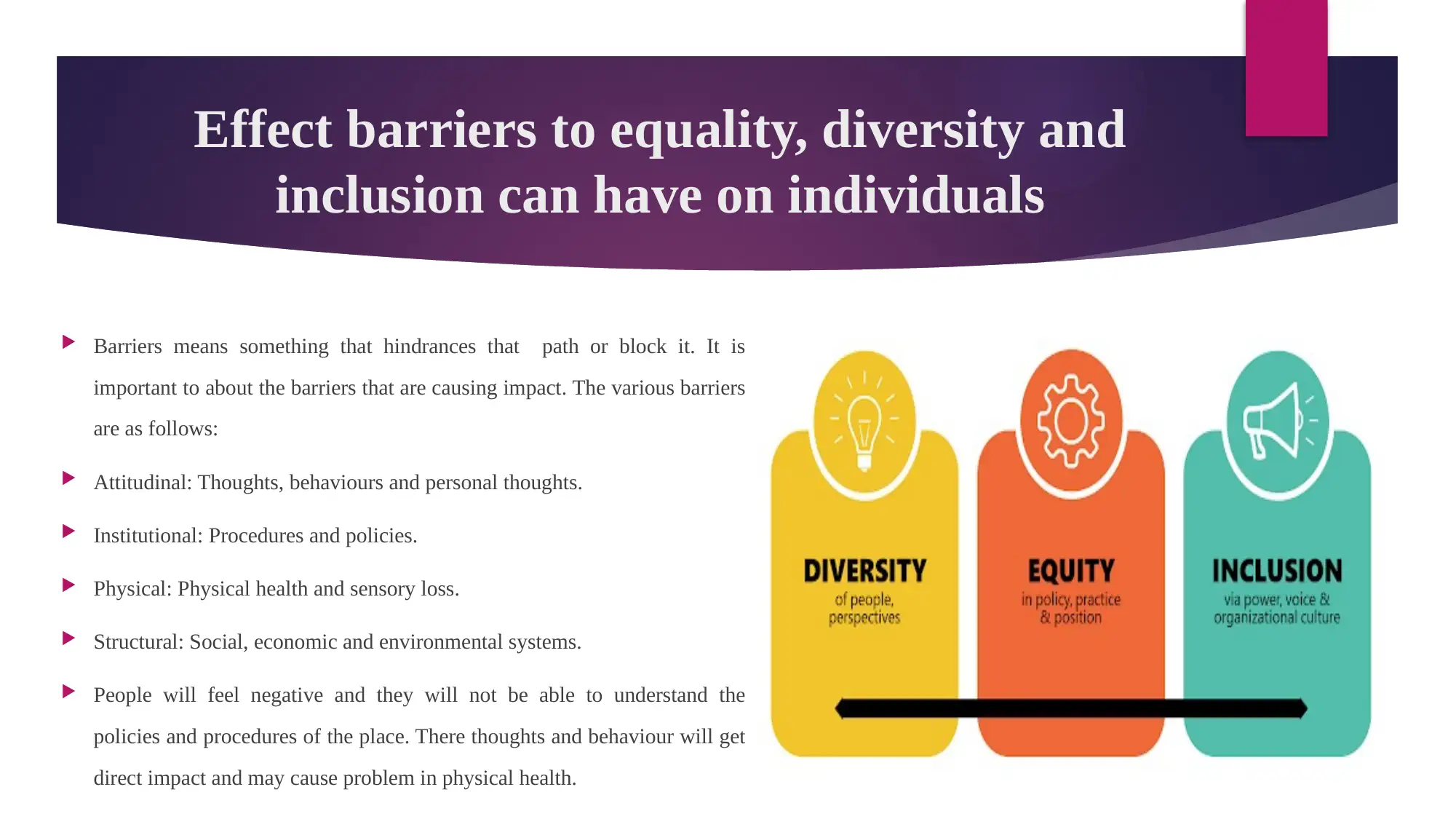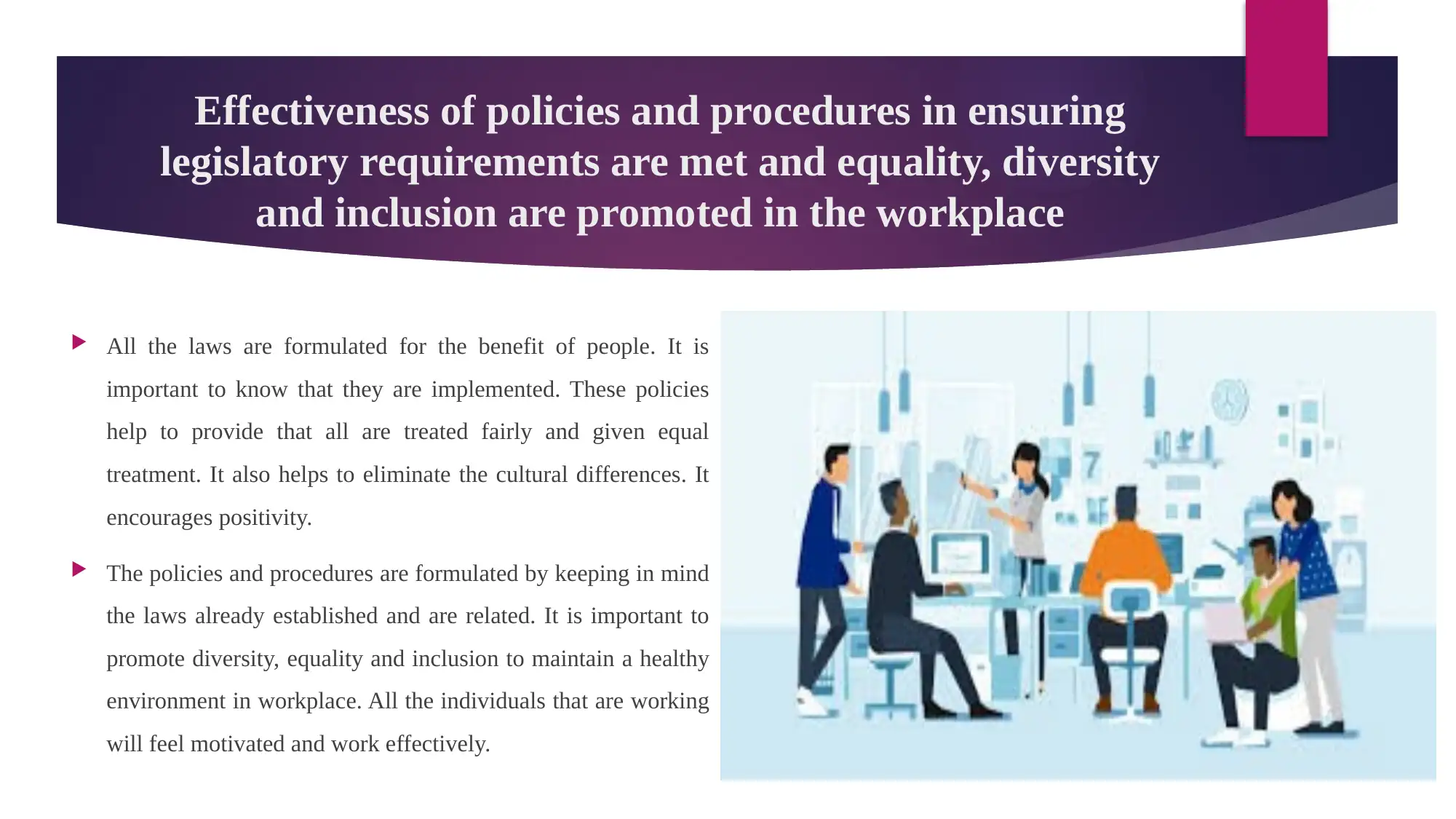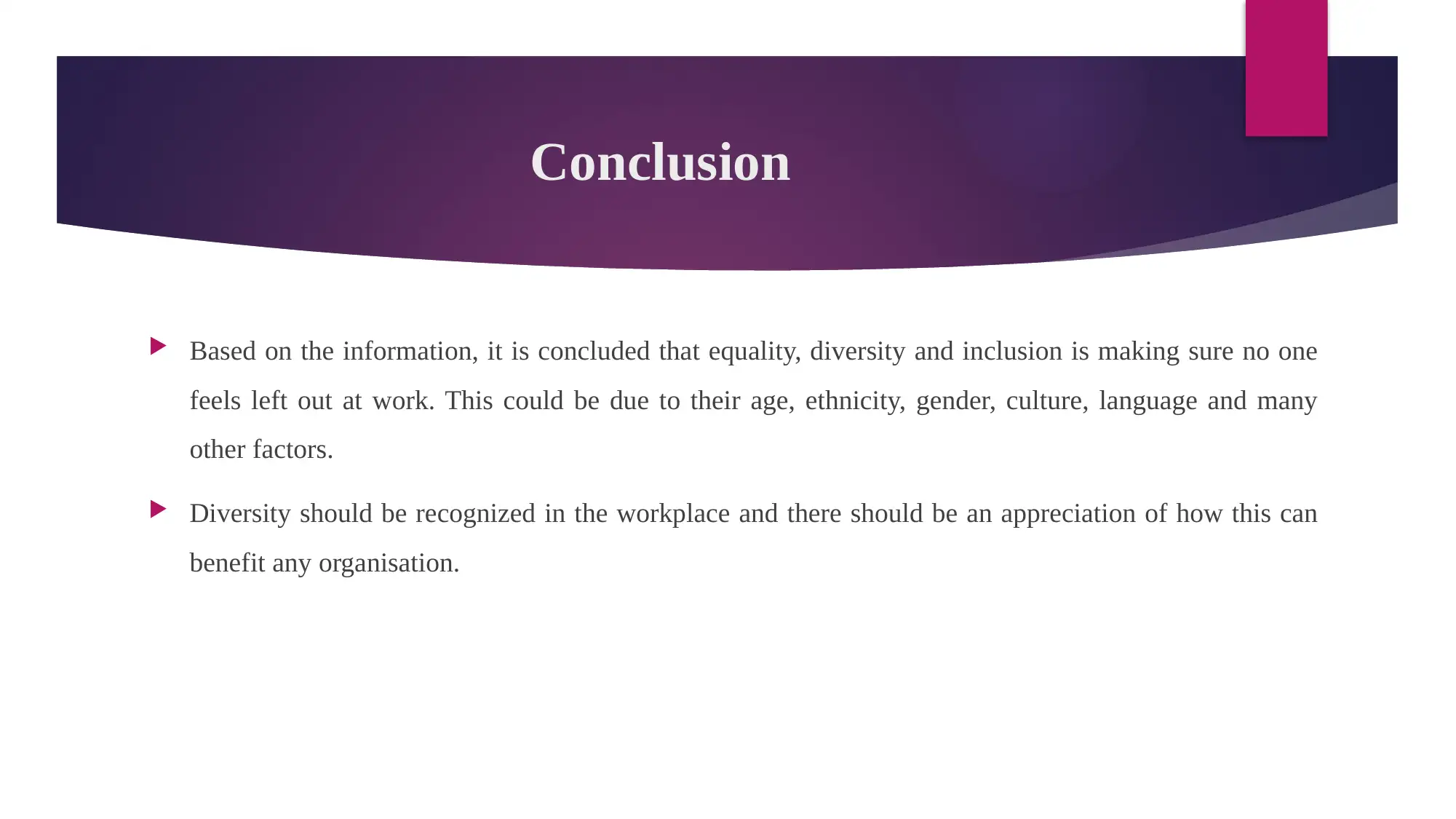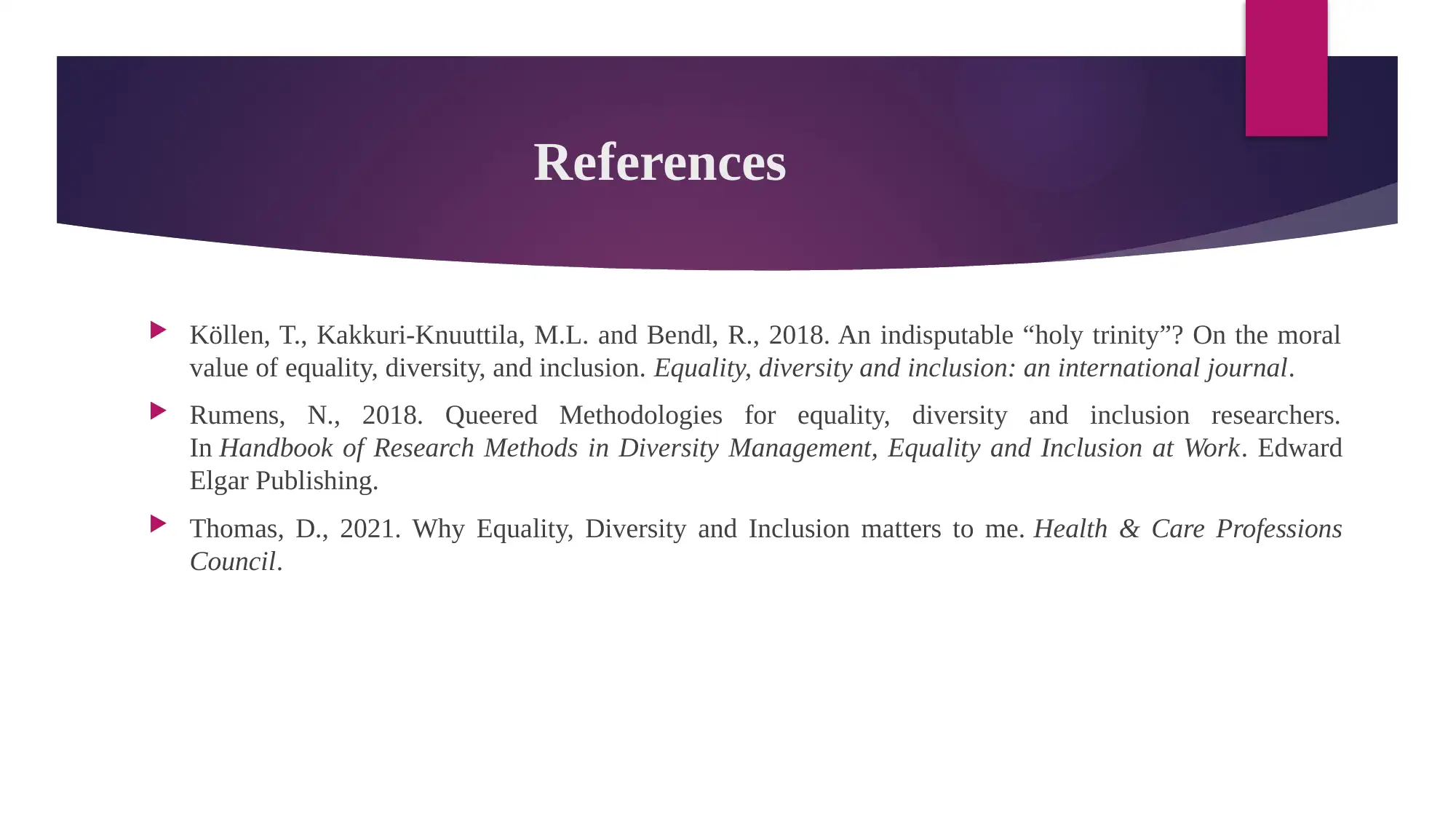Presentation: Equality, Diversity and Inclusion in Health Care
VerifiedAdded on 2022/12/29
|10
|894
|39
Presentation
AI Summary
This presentation focuses on equality, diversity, and inclusion (EDI) within the health and social care sector. It begins with definitions of equality, diversity, and inclusion, highlighting their importance in providing fair and accessible services. The presentation then explores relevant legislation, including the Equality Act 2010, the Mental Capacity Act 2005, and the Human Rights Act 1998, outlining the protected characteristics and key principles. It examines models of practice that underpin EDI, emphasizing the importance of treating all individuals equally and fostering inclusivity. The presentation also addresses the barriers to EDI, such as attitudinal, institutional, physical, and structural challenges, and their impact on individuals. Finally, it discusses the effectiveness of policies and procedures in meeting legislative requirements and promoting EDI in the workplace, concluding that EDI ensures everyone feels valued and included, benefiting organizations and individuals alike.
1 out of 10
